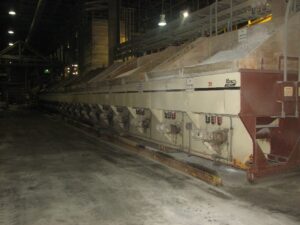Industrial Hygiene Blogs So Far
This is the ninth in a series of blogs on industrial hygiene (IH). Our last blog covered the selection of an industrial hygiene testing firm. The current blog will address what to do with the industrial hygiene testing results.
The Report
Most likely, if you selected a reputable firm with experience and a Certified Industrial Hygienist on staff, you will end up with a thorough report. The objective and scope of work will be stated and the methods will be identified. Details of the testing event will be provided. Then, the results will be presented and evaluated. They will be compared to regulatory limits of the U.S. Occupational Safety & Health Administration (OSHA, www.osha.gov) and recommended limits of organizations such as the American Conference of Governmental Industrial Hygienists (ACGIH, www.acgih.org) and the National Institute for Occupational Safety & Health (NIOSH, www.cdc.gov).
Oftentimes, we are asked why limits beyond OSHA’s are included. The reason is that in many cases, OSHA’s limits are 40 years old. They have not been able to keep up with new information and data, because most of their moves are challenged in court. We are talking worker protection here and minimizing your company’s liabilities. The other limits such as ACGIH’s Threshold Limit Values® (TLVs®) and NIOSH’s Recommended Exposure Limits (RELs) are more current and can be considered industry standards. Our legal friends tell us that you can be held accountable to industry standards in a court of law. Therefore, you want to take these recommended limits seriously.
Control Options
So, let’s say your report shows that the airborne concentrations of certain chemicals in your plant exceed the regulatory or recommended limits. What are your options to control the situation? OSHA would prefer that you use administrative controls or engineering controls  first and as a last resort personal protective equipment (PPE). Why is PPE considered a last resort? Because it is the last line of defense. If it fails, your workers may be ex-posed to hazardous airborne concentrations. Therefore, OSHA prefers that the hazard be eliminated or reduced to a level that is either nonhazardous or is as low as reasonably achievable.
first and as a last resort personal protective equipment (PPE). Why is PPE considered a last resort? Because it is the last line of defense. If it fails, your workers may be ex-posed to hazardous airborne concentrations. Therefore, OSHA prefers that the hazard be eliminated or reduced to a level that is either nonhazardous or is as low as reasonably achievable.
Here are a few examples of controls. Administrative controls may involve substitution of chemicals with less hazardous chemicals, or shift rotation to minimize the time of exposure, or changing the task so the worker is less exposed, or training employees properly. Engineering controls could include exhaust ventilation, automated dispensing of chemicals, general ventilation, and more. Of course PPE includes respirators, safety glasses, welding curtains, protective clothing, gloves, and on and on.
What Next?
Assemble the appropriate players and evaluate the different control options. The cost, effectiveness, and likelihood to be used are real factors for serious consideration. Once a selection is made and the controls are implemented, decide when to retest. After all, you probably won’t know whether the controls are effective without data.
So that concludes our blog on what to do with the results from completing industrial hygiene testing. And we have now covered a lot of ground in the field of industrial hygiene.
 If you need any help, Environmental Safety Consultants (www.escflorida.com) is here. We are a Florida licensed environmental engineering company with a CIH on staff. We have the credentials and experience to help you complete your industrial hygiene project.
If you need any help, Environmental Safety Consultants (www.escflorida.com) is here. We are a Florida licensed environmental engineering company with a CIH on staff. We have the credentials and experience to help you complete your industrial hygiene project.
We are just a telephone call (800-226-1735) or an e-mail away (escinc@verizon.net). Contact us today!
